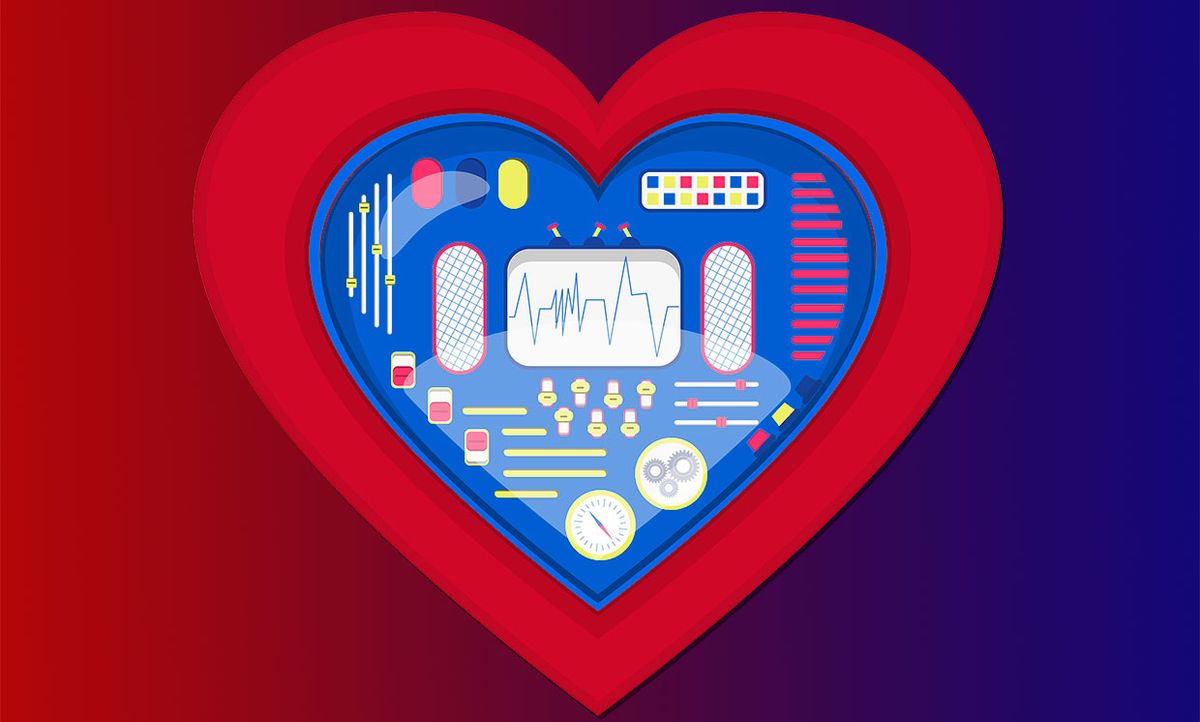For more than 60 years, the pacemaker—a device implanted in the chest that delivers electrical pulses to the heart—has served as the ticker’s ticker, producing a steady beat for hearts that can't do it on their own.
The device has prolonged countless lives, but even the most sophisticated pacemakers ignore a significant biological fact: Healthy hearts don’t beat steadily like a metronome. They speed up as we inhale and and slow down as we exhale.
Focusing on this natural variation, called respiratory sinus arrhythmia, may be the key to improving the pacemaker. “Devices have to listen to feedback from the body,” says Julian Paton, a professor at the University of Bristol, in the UK, who is leading some of the research in this area. “We need smarter devices.”
In a paper published this week in the Journal of Physiology, Paton and his colleagues describe a smarter pacemaker that puts natural variation back into a failing heart, helping it to work more efficiently.
The device reads the electrical signals generated by each breath, and paces the heart accordingly. In rats with heart failure, the device increased the amount of blood their hearts could pump by 20%, compared with monotonic pacemaking, according to the study.
“People are beginning to think about ways in which pacemakers could become more intelligent, but there’s nothing on the market that has demonstrated such a profound increase in heart rate,” says Paton.
Current pacemakers adjust heart rate by responding to changes in the body in relatively rudimentary ways, such as with accelerometers or by detecting increases in body temperature. Some newer devices can pace the heart based on respiration. But those devices track average respiration over a period of time, says Paton. “That’s not what we’re doing. We’re modulating the heart based on every breath,” he says.
The device features a neural-network-based analog chip developed by Paton’s coauthor Alain Nogaret at the University of Bath. In the rat experiments, it recorded electrical activity from the rat’s diaphragm muscles, which contract during inhalation. The chip interprets the signals conveyed to it by a lead in real time using Hodgkin-Huxley equations—mathematical modeling of how action potentials in neurons are initiated and propagated. The device then delivers electrical stimulation to the left atria of the heart, prompting it to beat in sync with breathing.
The advantage of using an analog device, compared with digital, is that it can respond quickly to changes in input from the body, says Paton. The device is scalable and can be miniaturized to the size of a postage stamp.
If the research progresses to humans, Paton says his team will not need to record signals from the diaphragm muscle. Instead, they will be able to integrate the device into conventional pacemakers, and gauge breathing by measuring electrical changes in chest resistance.
Paton’s work is among several approaches researchers are taking to modernize the pacemaker. Other groups aim to power pacemakers more efficiently, including powering them with the heart itself, and making them out of graphene so they can run on light. Some groups are developing optical pacemakers using a genetic engineering technique called optogenetics, rather than hardware, to trigger cardiac cell contraction.
Emily Waltz is the power and energy editor at Spectrum. Prior to joining the staff in January 2024, Emily spent 18 years as a freelance journalist covering biotechnology, primarily for the Nature research journals and Spectrum. Her work has also appeared in Scientific American, Discover, Outside, and the New York Times. Emily has a master's degree from Columbia University Graduate School of Journalism and an undergraduate degree from Vanderbilt University. With every word she writes, Emily strives to say something true and useful. She posts on Twitter/X @EmWaltz and her portfolio can be found on her website.



